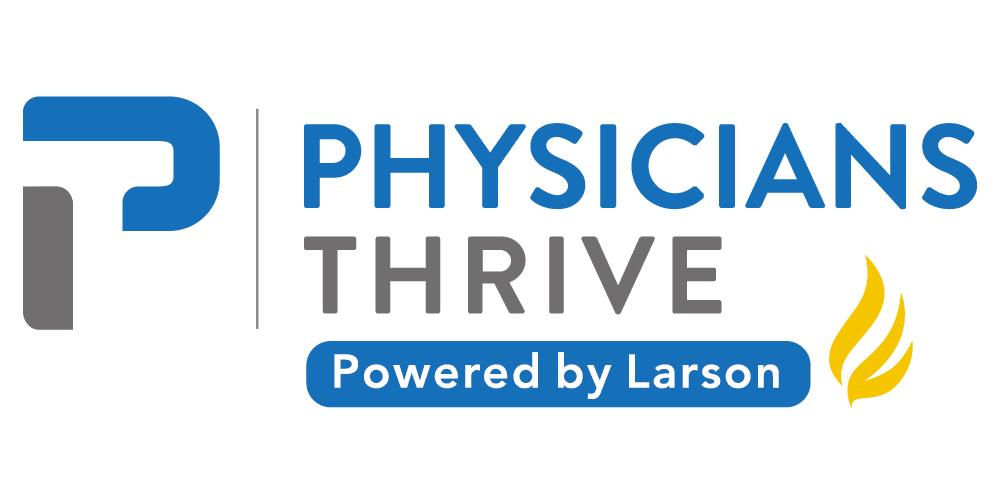As a physician who owns your own practice, having an experienced, dedicated, and talented staff is vital for growing your business.
One way to attract top talent is to offer a higher-than-average salary. Another way is to provide sign-on bonuses and excellent employee benefits. This may include high-quality health insurance and life insurance.
A third way to attract qualified physicians, nursing professionals, and great support staff is to offer retirement plans to help employees build their savings and establish future financial security.
That’s where the cash balance plan comes into play.
Unlike traditional pension plans and 401k retirement plans, cash balance pension plans offer a unique savings opportunity for employees. They also offer significant benefits for the employer who provides the plan.
Looking for a new way to attract employees, increase earnings, and make a greater return on your investments?
Physician practice owners can do all those things with a cash balance plan.
What is a Cash Balance Plan?
Retirement plans offered through employers are categorized as either defined benefit plans or defined contribution plans. There is a key difference in determining which category a plan belongs in. It depends upon whether the employee stands to gain a specified payment amount in retirement or has the ability to make and invest contributions to grow throughout their career until retirement.
Defined contribution plans include:
- 401k plans
- 403b plans
- Profit-sharing plans
- Stock ownership plans
Under some of these plans, the employee makes the contribution, assumes the risk for the investment, and reaps all the benefits when there is a return on their investment. Other plans, such as stock ownership and profit sharing plans, also have employer contributions. These employers may fund as much as 100%.
A cash balance plan is a defined benefit plan, though it works a bit differently from the typical pension plan.
The critical difference between a traditional defined benefit plan and a cash balance plan is that the funds in a cash balance plan can be invested in the stock market to grow.
With a cash balance plan, the employer, not the employee, makes the plan contributions and assumes all the risk for the investment. The invested contributions increase the plan balance over time. Which guarantees plan participants a lump sum of money to enjoy in retirement.
Upon retirement, the employee can withdraw their account balance in either one lump sum or through annuity payments, depending on how the plan sponsor (the employer) has designed it.
Discover: A Physician’s 4 Common Obstacles to Building Wealth
How Does a Cash Balance Plan Work?

Cash balance plans can be set up in various ways and with different terms and conditions, depending on the wishes of the business owner or practice partners.
Here’s how it works:
The employer establishes one specific plan, and each employee/participant in the plan gets a “hypothetical individual account,” which is a percentage of the plan’s total assets. Employer contributions are made annually to the plan for each participant involved.
The employer decides whether the contribution is a fixed dollar amount for every participant or a percentage of each employee’s salary. Some employers contribute the same rate across the board for all employees. In contrast, others contribute higher percentages for employees that have been on the plan for a longer time.
In addition to making annual contributions, employers also define a specific yearly interest credit (such as 3% or 5%). This is the guaranteed interest rate that employees will earn on the cash contribution.
Further Importance of Cash Balance
Cash balance contributions invest in the market, so the overall investment is subject to variable growth rates and can potentially suffer periods of loss. If the account balance grows at 2%, but the employee interest credit is 5%, the business must cover the loss. If the account balance returns 10% on an employee interest credit of 5%, that additional 5% goes to the employer.
In both scenarios, the employee is guaranteed a fixed rate of interest, which makes it a guaranteed opportunity to grow their retirement savings.
Employers also have the option to close out the current cash balance plan after several years. The IRS does not dictate a specific time frame for how long a cash balance plan must be in place; it only requires that it be funded for a period of “several years.”
Employees can roll their account balance into an IRA or a similar retirement account when a plan closes. That way they won’t have to pay penalties for early withdrawal pre-retirement age.
In some cases, employers will close out one cash balance plan and start a new one with different terms, contribution limits, and interest rates.
Related: How Much Money Do You Need to Retire?
The Pros of the Cash Balance Plan for Physician Practice Owners
So why would a physician practice owner want to assume all the investment risk on behalf of their employees’ retirement funds?
Because cash balance plans offer big benefits for the employer as well.
Physician-Owners are Also Plan Participants
As a physician that owns all or part of a practice, you can participate as an employee in your own cash balance plan. That means that the dollar amount or percentage you add to each employee’s hypothetical account, you add to your own hypothetical account as well.
Just like your employees, you’ll be guaranteed a set interest credit. But unlike your employees, if your investments outperform the guaranteed interest rate, you reap those added benefits. In some cases, physician owners can acquire as much as 90% of the total amount of cash accumulated in the plan.
Tax Benefits
Contributions made to cash balance plans on behalf of employees can qualify as tax deductions. The contributions you make will reduce your taxable income dollar for dollar. Whether you own a small private practice or a large medical group with multiple physician-partners, these tax savings can significantly reduce your tax burden at the end of the year.
As a physician owner that is also a participant in the plan, this offers a triple tax benefit:
1. You reduce your business’ tax liability at the end of the year
2. Reduced business profits also reduce your individual annual income, which lowers your individual tax liability
3. The money that accumulates in your cash balance plan is tax-deferred until withdrawal
Keep in mind that cash balance plans do have a lifetime limit. This figure adjusts every year for inflation and is currently at approximately 2.9 million. But since you don’t have to fund cash balance plans forever, physician owners can close out a plan nearing the 2.9 million cap and create a new one.
Increased Contribution Limits
The 401k and IRA retirement plan contribution limits set forth by the IRS do not allow physicians the opportunity to save much of your income.
As of 2021, IRA contribution limits are a mere $7,000 per year if you’re age 50 or older. 401k contribution limits are $19,500 per year, plus an additional $6,500 in catch-up contributions for those over 50.
Cash balance contribution limits are much greater.
Depending on the age and income level of the participant over $230,000 can be contributed annually to a cash balance plan. This is nearly ten times the amount that a physician around the age of 55 can put into a standard 401k.
In addition, depending on the number of rank-and-file employees, over 90% of the plan contributions can be for the business owner and family members that are employed by the business.
As an employer, you have the option to set your own contribution limits, and you can put them as low as you like or as high as the IRS allows.
Want to further reduce your tax burden? Read Tax Reduction Strategies for MD’s: Increase Your Deductions
The Cons of the Cash Balance Plan for Physician Practice Owners
There are many upsides for physician practice owners that create retirement cash balance pension plans — yet there are also a few downsides.
The biggest con is that employers assume all the risk.
Should your investment earnings not cover the guaranteed interest rate specified in the plan design, you could be on the hook to cover the loss for employees that are ready to make account withdrawals. If you have multiple employees retiring at the same time, this could have an even bigger impact on your cash flow.
The Pros and Cons of the Cash Balance Plan for Employees

For employees, there is virtually no downside to participating in a cash balance plan. Here are the pros and cons of having a cash balance plan as an employee.
PRO: You Don’t Have to Make Any Difficult Investment Decisions
Your employer contributes pay credits (aka cash) into your account as defined by the plan. You earn interest credits on those contributions in the amount of the interest rate decided upon by your employer. It’s not up to you to determine how much to invest or where to invest it.
PRO: Your Account Grows Tax-Deferred Until You Make a Withdrawal
A cash balance plan is a way to earn tax-deferred money for retirement. You won’t pay taxes on your account balance until you withdraw the money.
Cash balances plans are qualified plans. Meaning they’re protected under ERISA laws (a federal standard that governs pension plans in private industries). Fund amounts can vary significantly depending on your years of service and how long you’ve been vested in the plan. However, you’re guaranteed to have some cash available when you’re ready to retire.
PRO: You Can Contribute to Other Retirement Plans at the Same Time
Employees should consider a cash balance plan as just one of several investment vehicles for retirement. Employees can benefit significantly from having another retirement account that they do contribute to, such as an IRA or a 401k.
Physicians should always diversify their investments among various retirement accounts, stocks, bonds, real estate, and insurance policies.
CON: You Can’t Decide Where to Invest the Money
You won’t be able to decide where to invest the funds in your cash balance plan. Since all the money funding your account belongs to your employer, they make this decision without your input.
With a 401k, you can decide how much of your contribution goes into different avenues. This may include stocks, bonds, money market funds, and stable value funds. With a cash balance plan, you have no control and no say in where or how the money is invested. For this reason, it’s best to have varied retirement accounts. This includes ones where you can make your own investment decisions.
CON: Penalties for Early Withdrawal
The only other con to a cash balance plan is that you’ll pay penalties if you withdraw funds prior to retirement age. But this is the case with all retirement accounts, so it’s a con that they all share.
When you do hit retirement age and are eligible to take withdrawals, the plan may dictate how you do so. Some plans require that you take the cash from your plan in one lump sum rather than in annuity form or annual distributions — which many retirees prefer.
Should Private Practice Physicians Offer a Cash Balance Plan to Employees?
From multi-physician partnerships to individually owned private practices, large and small business owners alike can benefit from offering their employees a cash balance pension plan.
Cash balance plans are a way to increase your own retirement savings, tax-deferred.
As a business owner, they reduce your tax obligations to the IRS. The better your investments perform, the more money you’ll have. You can use that money to fund the individual employee accounts in the future. You can also increase contributions, save even more for yourself, and reduce your tax liability even further.
Cash balance plans are also a great benefit for employees. They can attract more talented and experienced physicians (and non-physicians) to your staff. The more retirement benefits you can offer as part of your overall employee benefit package, the more of an advantage you’ll have in hiring and retaining employees.
Not sure if you should establish a cash balance pension plan, a 401k, or a different retirement savings account for yourself or your employees?
Contact Physicians Thrive to learn more about retirement plans, tax savings plans, and insurance policies that can help you build wealth for retirement.
Subscribe to our email newsletter for expert tips about finances, insurance, employment contracts, and more!







































